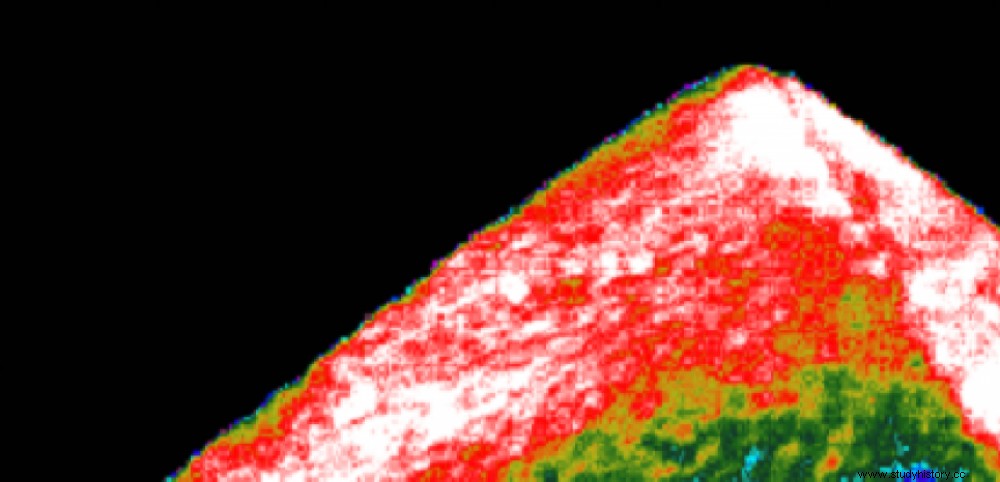The Scan Pyramids campaign reveals a clear temperature separation on the west face of the red pyramid of Dahshur. Could the Sun be the cause?

This infrared thermography image shows a marked temperature difference between the hot top of Dahshur's red pyramid (in red) and the colder bottom (blue and purple) of about 3 degrees. A very frank separation that is not found on the other sides.
SUN. On January 17, 2016, during a press conference given at the Grand Egyptian Museum in Giza, the Scan Pyramids mission team revealed a strange image:in infrared thermography, the west face of the red pyramid of Dahshur shows a sharp temperature separation not found on the other sides. On either side of an oblique line that starts from the bottom of the monument, there is a difference of several degrees, day and night, between the top, which is warmer, and the base, which is colder.
Could this be the effect of the Sun? On the west side, the star sets and the upper part of the pyramid remains illuminated longer than the lower part. This is a hypothesis that scientists intend to study during future, longer, campaigns that are scheduled. But, remarks Matthieu Klein, of Laval University in Quebec, "the other pyramids are exposed in the same way, excluding the inclination of the planes - that of the Red being the weakest. Why, then, do not show- they don't behave the same?" On the other hand, he adds, "the shadow, and its effects, should move with the star, and lead to a temperature gradient. However, we see rather a line, a clear separation than a gradual gradient" .
Finally, if it is an effect of the Sun in the evening, for there to be a shadow on the bottom of the monument only, knowing the site is well discovered, it would have to be very low. "Well, in this case , concludes the specialist, it hardly heats up anymore. Worse, the phenomenon would be very short and would have almost no impact on the temperature of the building" . Before further explorations, the Scan Pyramids team refuses to make any assumptions. "The effect of a regular wind, blowing like an oblique air flow, can also be considered, again offers Matthieu Klein. To verify this, it would be necessary to resort to simulations, in several directions" . But here too, the sharpness of the separation between hot and cold zone raises questions. Especially since the measurements were taken on a day when the wind was weak and the desert around the pyramid is clear enough not to create a wind corridor. To be continued…
